This traditional Irish Potato Farls recipe is so easy and made with just 4 simple ingredients. Also known as potato bread or cakes, Farls are a tasty classic breakfast from Ireland. Perfect for St Patricks Day or any day of the year.
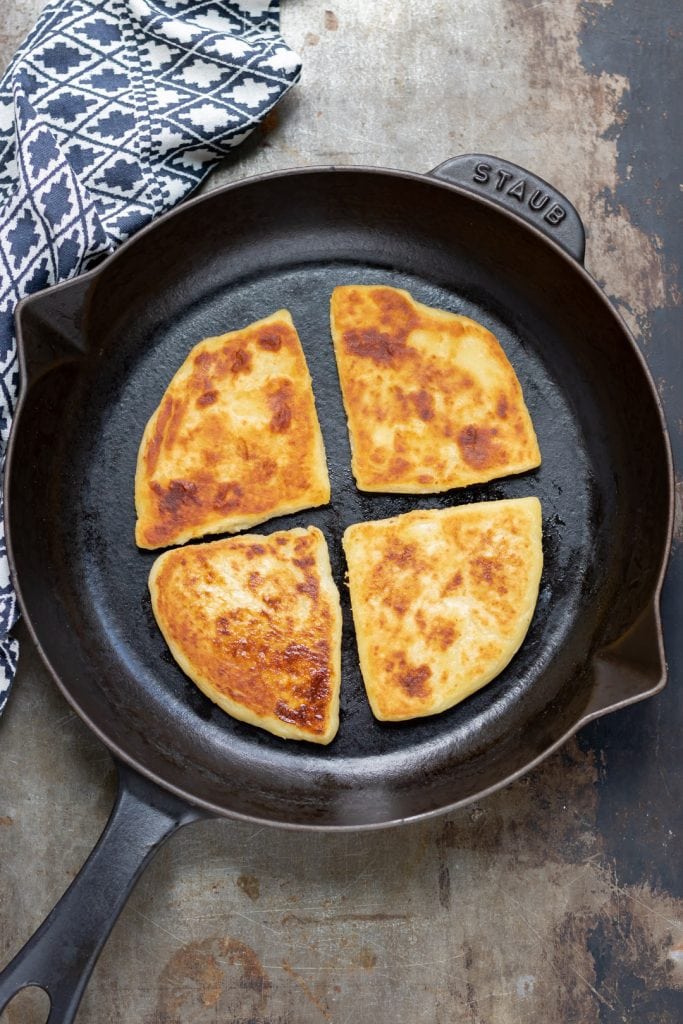
Potato Farls are a classic Irish food made from a dry-fried dough of mashed potato and flour.
This is my Irish mum's traditional recipe that she's handed down to me and I'm delighted to share it with you.
Jump to:
Also known as potato bread, tattie scones or potato cakes, depending on the region, Farls are simply made from mashed potato and flour mixed into a dough and then fried.
Farls are simple, rustic, budget-friendly and so tasty!
They're usually served as part of a Northern Irish breakfast known as an Ulster Fry.
The little dense potato cakes are then eaten as they are, or buttered and fried again so they get lovely and crispy on the outside and fluffy inside.
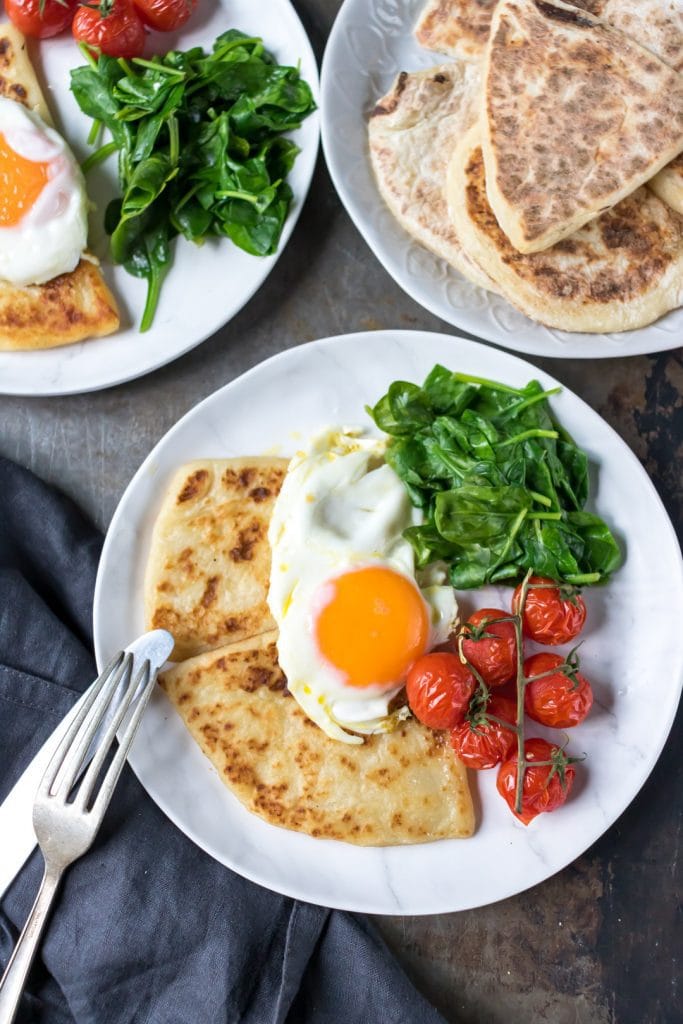
Potatoes never go to waste in an Irish house and potato farls were a staple for me growing up.
My parents ensured we were always carb-loaded with traditional Irish foods such as champ, colcannon, stew and, our favorite: Potato Farls.
Why You'll Love This Recipe
If you make a big batch, they freeze well so you can enjoy them another morning.
Go super Irish and enjoy them with a slathering of Kerrygold Irish butter.
It’s not a traditional bread in the sense that you don’t need it to have any yeast to rise. The baking powder gives it a slight fluffy texture, but it's mainly dense fried mashed potatoes.
You can even eat them cold with butter if you prefer, or you can reheat the leftovers. My favorite is after dry frying them initially, so spread them with a little butter and fry them again so they go crispy.
Potato farls are an easy traditional Irish recipe for St Patrick's Day.
You can eat them warm or cold after the first cooking, but they’re usually fried a second time with a little butter before serving warm.
Since the ingredients are simple and contain potatoes and flour, it makes for a great budget-friendly breakfast side dish.
Farls can also be served as a side for lunch or dinner recipes.
Potato bread can be made in a large batch then freeze it for later use!
In much of the UK, you can buy them in grocery stores, normally by Rankin or Tesco. But they are a million times better homemade from scratch.
I used to help my mum make Irish potato farls all the time when I was a little girl and they always remind me of her.
The entire recipe is made in under 30 minutes which is great if many different foods are being cooked for breakfast.
What is a farl?
In Gaelic, the Irish language, a farl means a flatbread or savory cake that is cut into four pieces, and translates as 'fourths'. It usually refers to potato farls or soda farls.
That's why, although you could roll out a large piece of these potato cakes and cut them into lots of pieces, they're usually rolled into smaller circles that are cut into four with a cross.
There are different types farls, since it means a food cut into fourths. Most common are these potato farls, as well as soda farls, which are thicker baking soda-leavened breads that are also made up of a round cut into four pieces. You'll often find them halved spread with butter and the cut side fried as part of an Ulster Fry.
In Ireland, people are pretty superstitious, or at least they used to be.
So often baked goods have a cross in them (like in soda bread) and it's apparently to 'let the fairies out'. Catholics make the cross on it as a symbol of the Father, Son and Holy Ghost, to bless the bread.
My mum, who is from Belfast in Northern Ireland, probably wouldn't consider herself superstitious, but woe betide anyone who puts new shoes onto a table or spills salt without throwing some over their shoulder.
My mum had a real four-leaf clover that she found when she was a wee girl. She kept it safely pressed between the pages of a book.
When I was small, I took it out to look at it and it crumbled to dust in my hands. I've looked for a replacement ever since, whenever I spot a patch of clover.
International Versions
In Northern Ireland, this recipe is referred to as Farls, but in the South of Ireland, it's also called Potato Bread.
There are similar versions of mashed potato mixed with flour and dry fried in other places too.
In Scotland, they're called Tattie Scones, whereas in the North of England, they're sometimes called Potato Cakes.
Ulster Fry
If you have leftover mashed potatoes to use up, they're easy to turn into farls the next morning.
Potato Farls are usually served at breakfast, but they also make a delicious snack, lunch or light dinner.
They're most often found as a classic part of an Ulster Fry.
An Ulster Fry is a traditional Northern Irish breakfast that contains a combination of baked beans, eggs, sausage, bacon, black pudding and it's staple ingredient of mashed potato bread cakes known as potato farls.
Of course, there are myriad combinations in an Ulster Fry depending on the region, restaurant or family preferences.
These potato cakes give the breakfast a starchy balance to all the heavy protein on the plate and are incredibly easy to make.
A simple dough is formed then fried in a pan so there’s no baking needed!
Ingredients
Potatoes - Potatoes are the main ingredient for this potato bread. You want to make sure they are peeled and cut into large chunks to maintain their shape and texture when they are being cooked. Use your favorite variety for mashed potatoes, such as Russets, Yukon Gold or Maris Piper.
All-purpose Flour (Plain Flour) - This helps lighten the dense texture of the potato and turn the mash into more of a dough.
Butter or Oil - Butter is used to make the dough but also to fry up the farls in a hot skillet (they're first cooked in a dry frying pan, but tasty fried a second time before serving). Make vegan potato farls by using vegan butter.
Baking Powder - Helps the potato farls rise and become fluffy.
Salt - Salt brings out and balances all the flavors in all of the ingredients used.
How to make Potato Farls - step by step
Follow this step-by-step photo tutorial, then scroll down to the recipe card for the full ingredients list and method.
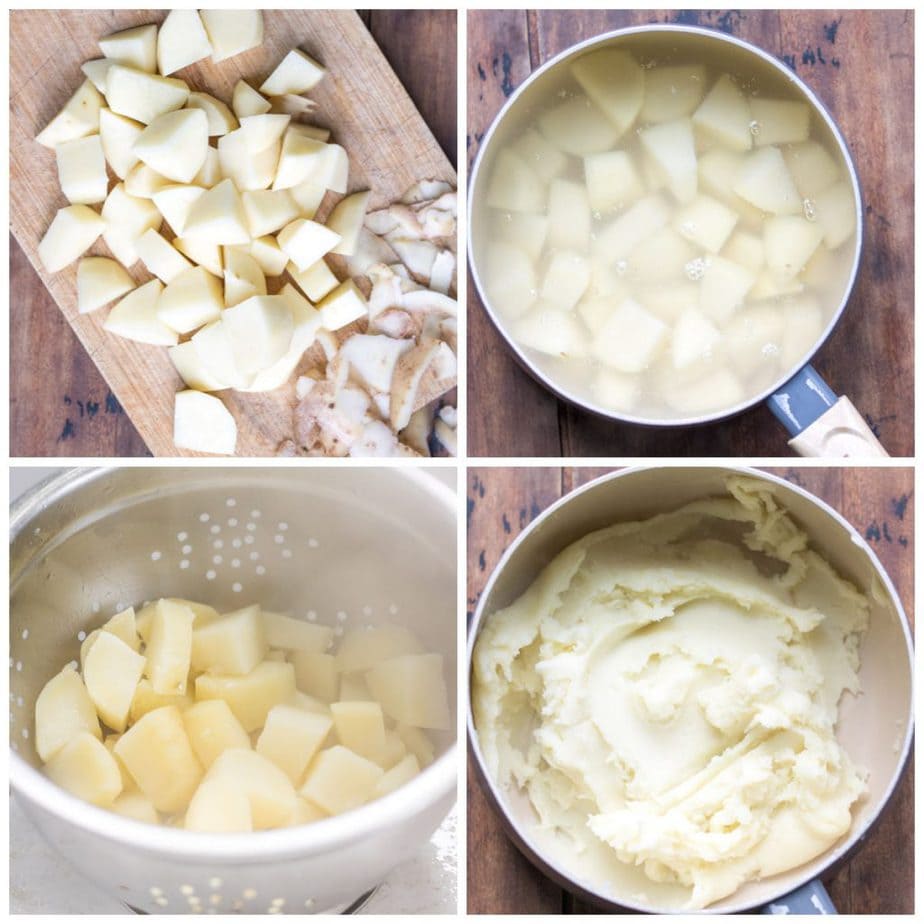
First, boil the potatoes and then mash them. Or, use leftover mashed potatoes.
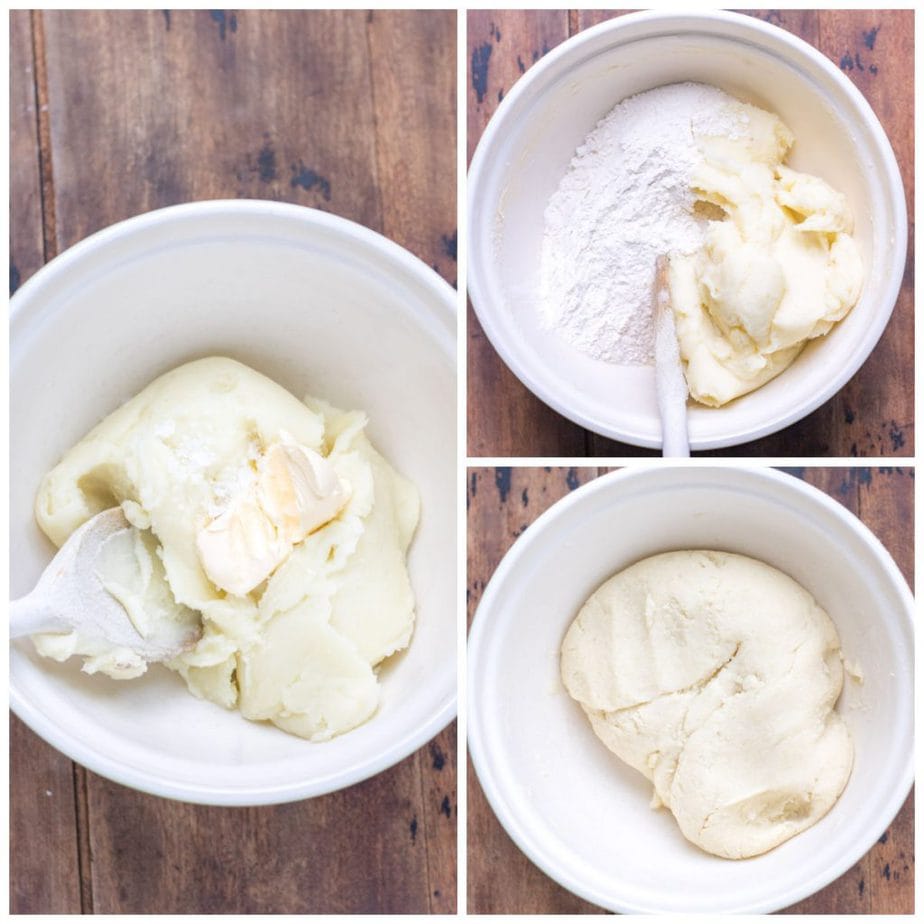
Next, stir in the butter and salt. Add the flour and baking powder and stir or use your hands to bring it together into a dough. You don't need to knead it but bring it together well.
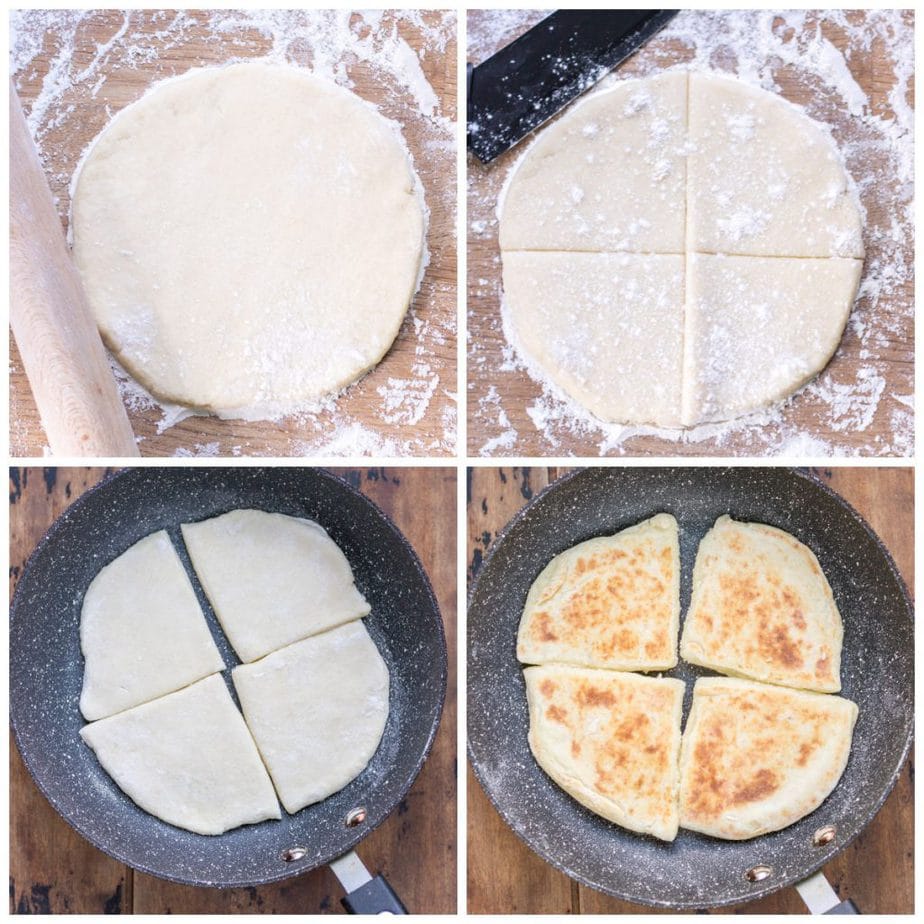
Lightly flour the countertop. Then roll ⅓ of the dough out to a circle about 5mm thick. Dust with a little flour.
Cut the circle into four pieces with a cross through the centre, then repeat with the rest of the dough.
Heat a large dry frying pan (no oil or butter) and fry the farls in batches for about 4 minutes on each side until they get dark spots and are cooked through.
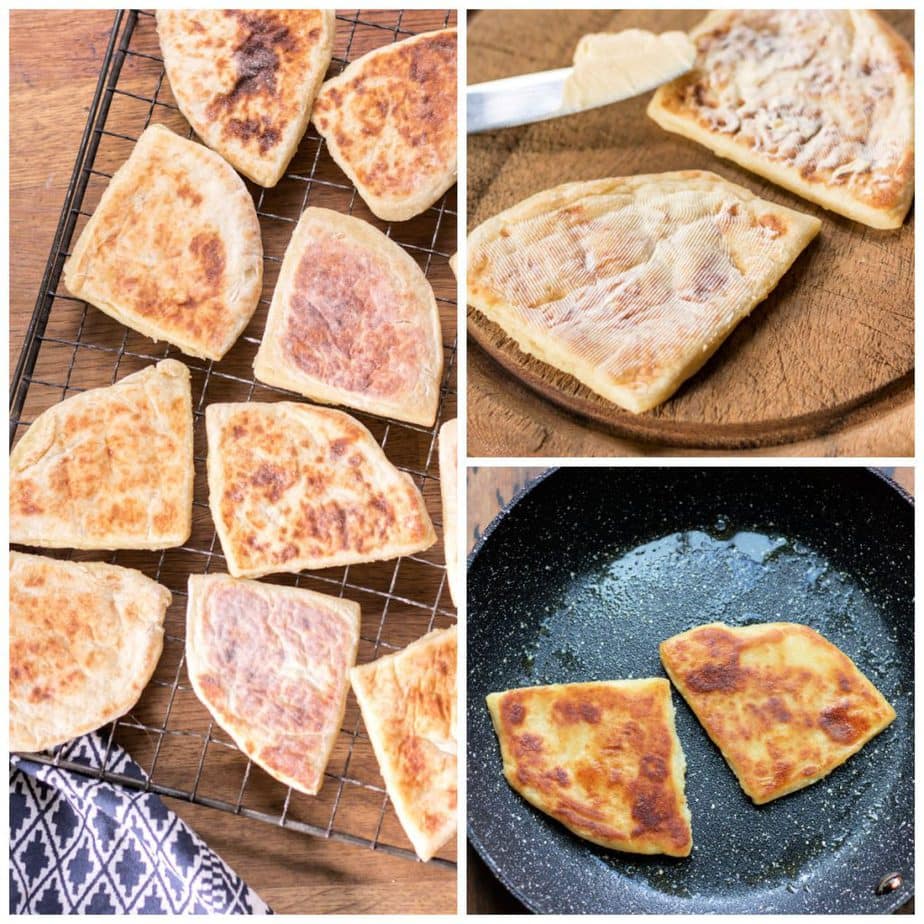
To serve, either eat them as they are or fry them a second time, by heating a little butter in a pan and fry each side for a few minutes until crispy and warm.
Tips
For best results getting your mashed potatoes to be creamy without being gummy, use a potato masher or a potato ricer.
It’s important to initially cook the potato farls without any butter or oil in a dry pan to build up a crust with dark spots.
You can eat them warm or cold after the first cooking, but they’re usually fried a second time with a little butter before serving warm.
Roll the farls to about 5mm thickness. The baking powder makes them rise ever so slightly, but they are still a thin potato cake.
For best results, use a non-stick pan.
Wipe the flour out of the pan between batches so the excess flour doesn’t burn.
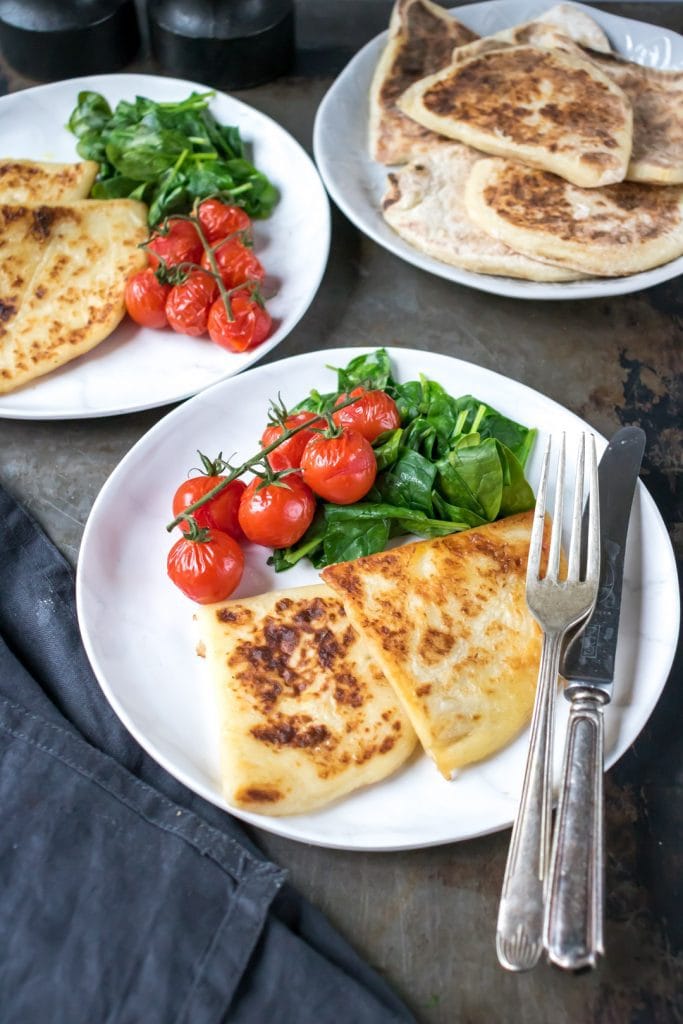
Serving Suggestions
The traditional way to enjoy potato farls is as part of an Ulster Fry (Northern Irish cooked breakfast).
For a more veggie-friendly Irish breakfast, serve them with wilted greens, grilled tomatoes and fried eggs.
Add them to a charcuterie-style Pancake Board.
Serve with a side of hearty Baked Beans.
Enjoy them with fried eggs and Carrot Soda Bread.
Make them a brunch staple and serve with cream cheese and Vegan Smoked Salmon.
Serve them on St Patrick's Day! Check out my other Irish recipes, including a naturally green Kale Soda Bread or Seeded Soda Bread.
Enjoy with a Vegan Irish Stew.
Great as a side dish along with Tomato Soup.
Add scallions / spring onions to the mashed potatoes to make Northern Irish style Champ Potato Farls.
Variations
Flavor the farls with herbs and spices you enjoy. Not traditional at all, but a nice twist on the classic.
Use whole wheat flour instead of white flour for a dose of healthy whole grains and fibre.
Add in some shredded cheese for a cheesy potato bread.
For a rich flavor, use Irish grass fed butter such as Kerrygold.
Change the color to a deep yellow and add some inflammatory properties by adding in some ground turmeric.
Add some freshly chopped chives into the dough for a mild onion flavor.
Mix in some chopped scallions / spring onions for a twist on Northern Irish Champ.
A little cabbage or kale mixed into the mashed potato will make it more like Irish Colcannon farls.
Storage & Special Diets
Storing: Farls can be stored in an airtight container in the fridge for up to 4 days. To reheat, add some butter to a skillet and heat them on each side over medium-high heat until warmed through.
Freezing: You can freeze cooked potato farls. Just put bits of baking paper between them and adding them to a freezer-safe bag or airtight container. They will stay fresh for about 3 months. Let them thaw and you can heat in a toaster or frying pan with a bit of butter.
To Make Gluten Free: To make this recipe gluten free, replace the wheat flour with gluten free flour. Be sure to check your baking powder is gluten-free too.
To Make It Vegan: To make this recipe vegan, use a vegan butter substitute.
FAQs
Is traditional potato bread gluten free? Since potato bread contains a mix of potato and plain flour it is not gluten free. However, you can use gluten-free flour as a replacement.
Can I use dried potato flakes instead? You can use dehydrated potato flakes in this recipe. However, the texture will change slightly as the starch content in potato flakes and fresh potatoes varies greatly. You'll just need to adjust the amount of flour you use in order to get a rollable dough.
What potatoes can I use? You can use any potatoes you enjoy to make this recipe as long as they are peeled. Some examples are russet potatoes, golden potatoes, red potatoes or even sweet potatoes!
More Potato Recipes
Mini Baked Potatoes
Greek Potato Salad
Roasted Potato Peels with Rosemary & Sea Salt
Sweet Potato Gnocchi
Vegan Mashed Potatoes
Garlic Mashed Potatoes
Irish Recipes for St Patrick's Day
Make it a full St Patrick's Day of Irish recipes with these! Slainte!
Irish Cream Donuts
Vegan Irish Stew
Irish Colcannon
Carrot Soda Bread
Kale Soda Bread
Champ Potatoes
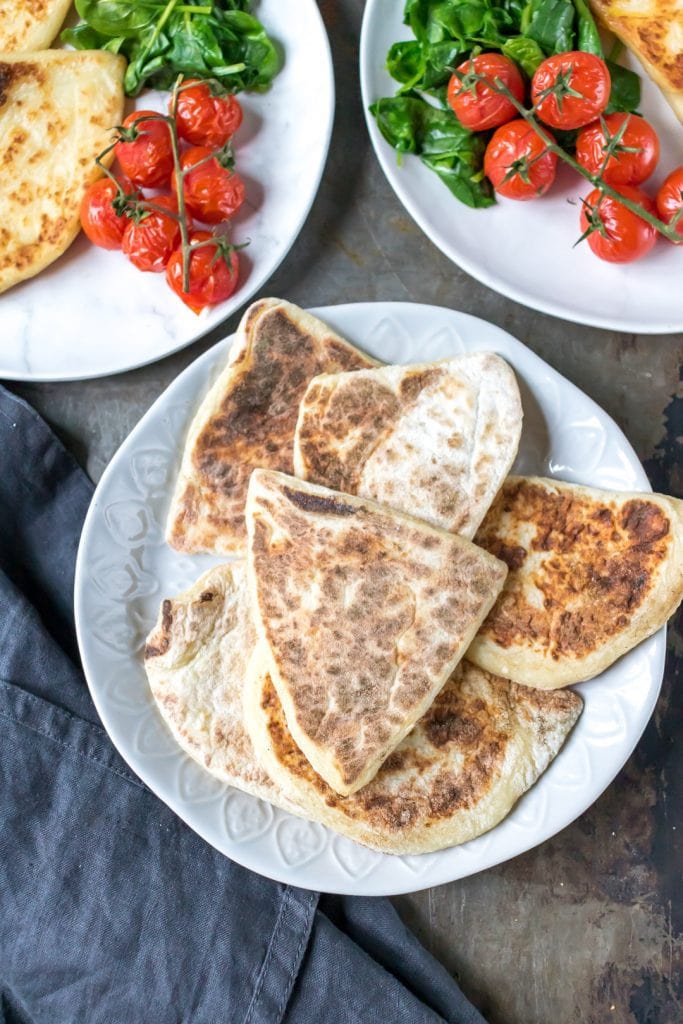
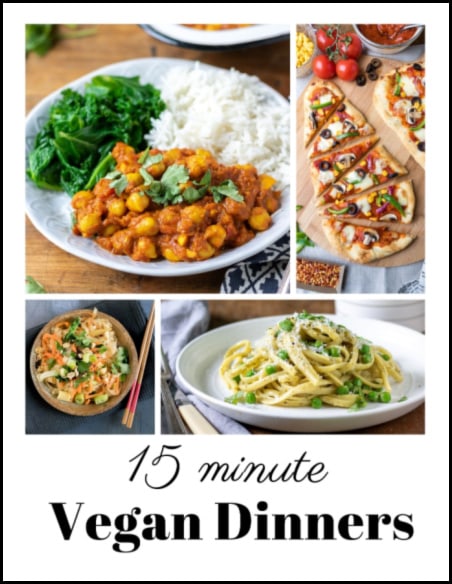
Sign up for our free newsletter and never miss a recipe!
Plus, you'll get a free eBook: 15 Minute Vegan Dinners!
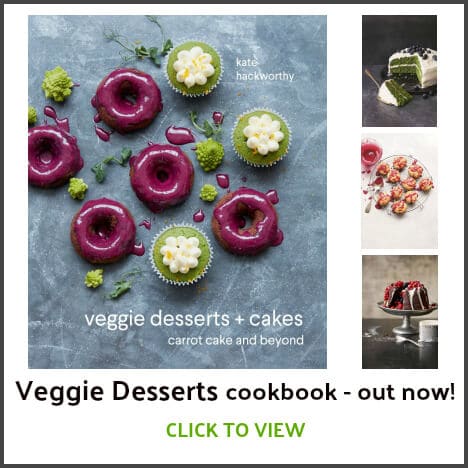
Check out the Veggie Desserts + Cakes cookbook on Amazon
📖 Recipe
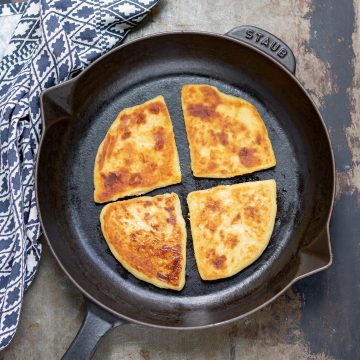
Irish Potato Farls
Equipment
- Pot
- Bowl
- Masher
- Rolling Pin
- Frying pan
Ingredients
- 2 cups (500g) mashed potato (from 500g peeled potatoes, approx 3 medium potatoes)
- 1 tablespoon butter plus extra for frying
- Pinch of salt
- ¾ cup (100g) all-purpose flour (plain flour), plus extra for dusting
- ½ teaspoon baking powder
Instructions
- Boil the potatoes in a pan until tender, approx 10-15 minutes depending on the size of the chunks.
- Drain well, then mash or use a potato ricer.
- Stir in the butter and salt (if your mashed potatoes are cold, then melt the butter first).
- Stir the flour and baking powder together, then add to the potatoes. Stir or use your hands to bring it together into a dough.
- Lightly flour the work surface, then roll ⅓ of the dough out to a circle about 5mm thick. Dust the top with a little flour and cut the circle into four pieces with a cross.
- Heat a large dry frying pan (no oil or butter) and fry the farls in batches for 3-4 minutes on each side until they get dark spots and are cooked through. Repeat rolling and frying the rest of the dough.
- To serve, heat a pan, spread both sides of the farls with butter and fry each side for a few minutes until crispy and warm.
Video
Notes
Nutrition
The nutritional information provided is approximate and can vary depending on several factors, so is not guaranteed to be accurate. Please see a registered dietician for special diet advice.


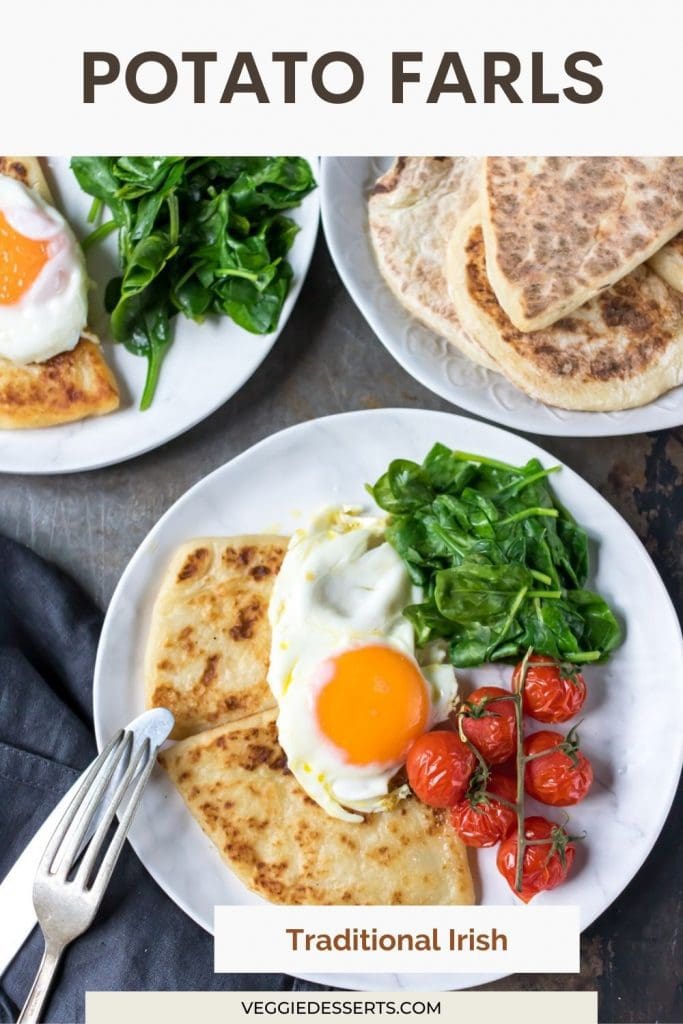
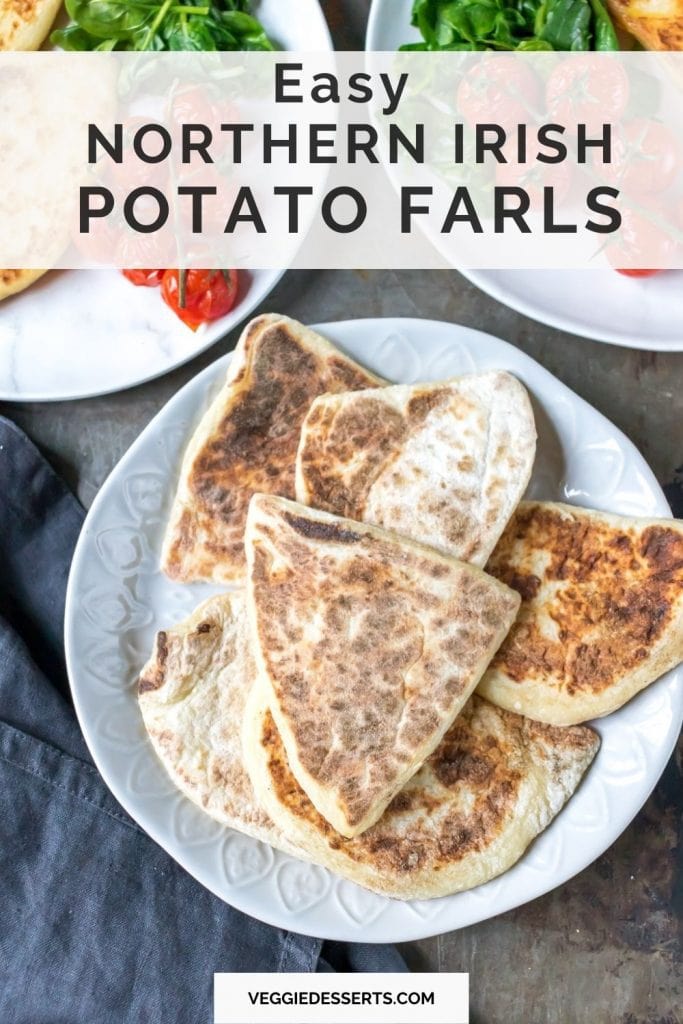
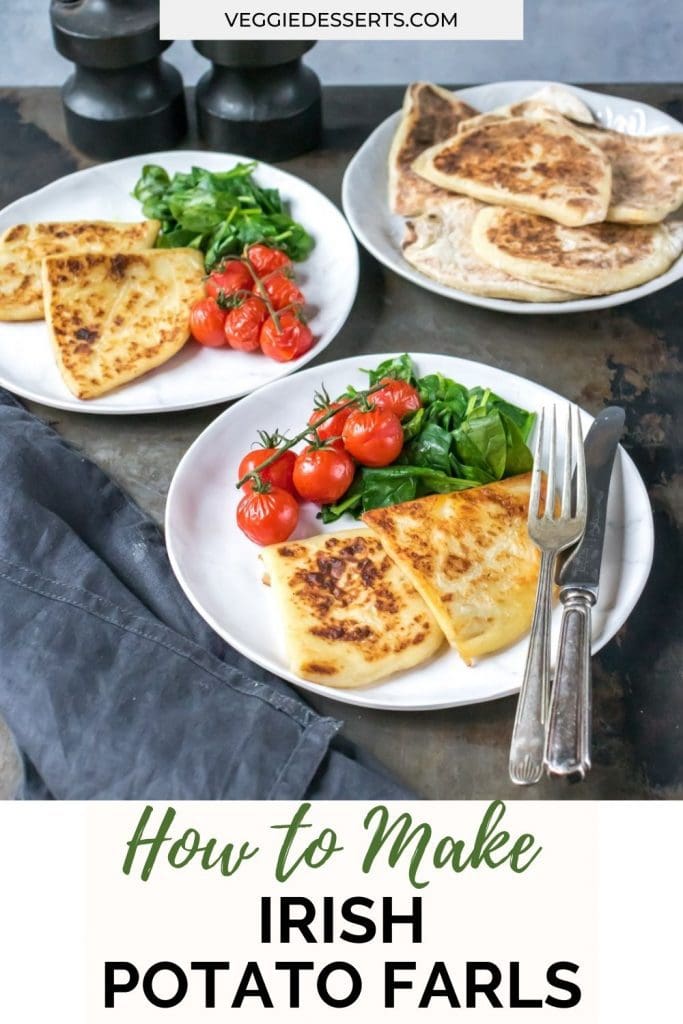

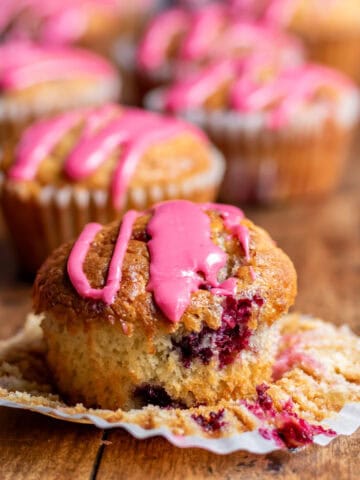
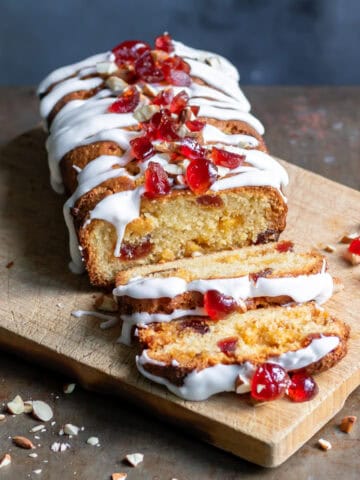
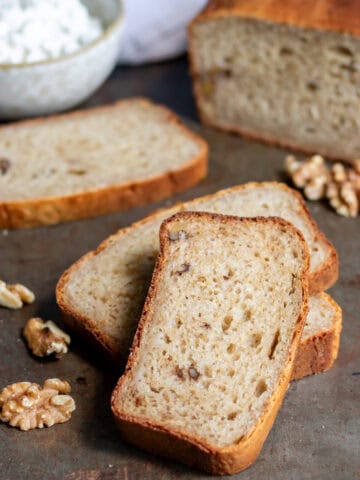
Olly
Whatever you do do NOT include baked beans in an Ulster fry. Anyone in Northern Ireland would 'gurn' if you put them on the plate! The one thing that you missed, which is essential in an Ulster fry is 'veggie roll'. Veggie Roll is a Northern Irish delicacy, made up of cuts of lean beef and seasoned with fresh herbs and vegetables such as leeks and onions. An absolute must! In my experience here in Irelnad is that an Ulster fry is....Back bacon, pork sausage, fried egg, fried soda bread, fried potato farl, mushrooms, grilled tomato, black pudding and white pudding. All washed down with a mug of tea. The only other thing you need on hand is a defibrillator!
Rosa Lola
Just like granny makes!
Liana
Is this ever made with oats? I came across a recipe in one of my medieval cookbooks that called for soaking oats, then adding those to the mashed potatoes to make a dough. Maybe because flour wasn't as common back then?
Jen
My kids and I had fun making this for breakfast. We loved it with our morning eggs as a fun twist. We'll definitely be making this again.
Uill
Great recipe, full on comfort food… so good with a cup of tea or some soup.
One correction I would make, not to the recipe but to the article, is that farl actually comes from Scots or old English, not Gaelic. The Irish word for “four” is “ceathair” (pronounced like “kah-har”). A fourth is “ceathrú”.
Farls are generally more popular in Northern Ireland where they would have more of a Scots influence. Scots is an anglo-Saxon language that predates English. But the rest is correct! Farl comes from fardel, an old English way of saying “fourth deal”, as in the piece of food is dealt into fourths.
In the rest of Ireland we have “boxty”, a similar type of potato bread… but it also includes grated potato so is more similar to a latke. “Boxty” comes from Irish alright, from the word “bocht-tigh” meaning poorhouse. The poorhouses were established by the British to provide some very basic support to the communities they decimated. Families were split up into different wards in the poorhouses and were expected to work for some meagre food supplies. There wouldn’t have been much time to cook, hence the inclusion of raw potato shavings in the pancake.
Kate Hackworthy
Wow, thanks for such a detailed explanation!
Siobhan
Dia duit. Just a little correction to Uill's post - 'Scottish' is definitely not an Anglo-Saxon language!! Scots Gaelic for 'four' is ceithir - very similar to ceathair in spelling and pronunciation.
Doesn't really matter about the etymology - this is a great recipe and I'm a firm believer that a potato cake a day keeps the doctor away (or something like that)!
Fantastic site by the way 🙂
Toni
Thank you so much for the tips and very detailed recipe! It turned out so good and delicious! My family loved it!
Maria
I love savory pancakes like these! Ulster fry it is on St. Paddy's Dy morning!
Jessica Formicola
These potato farls look amazing and I can't wait to try them for St. Patrick's Day!
Dannii
I haven't heard of these before, but they sound like a delicious way to use mashed potato.